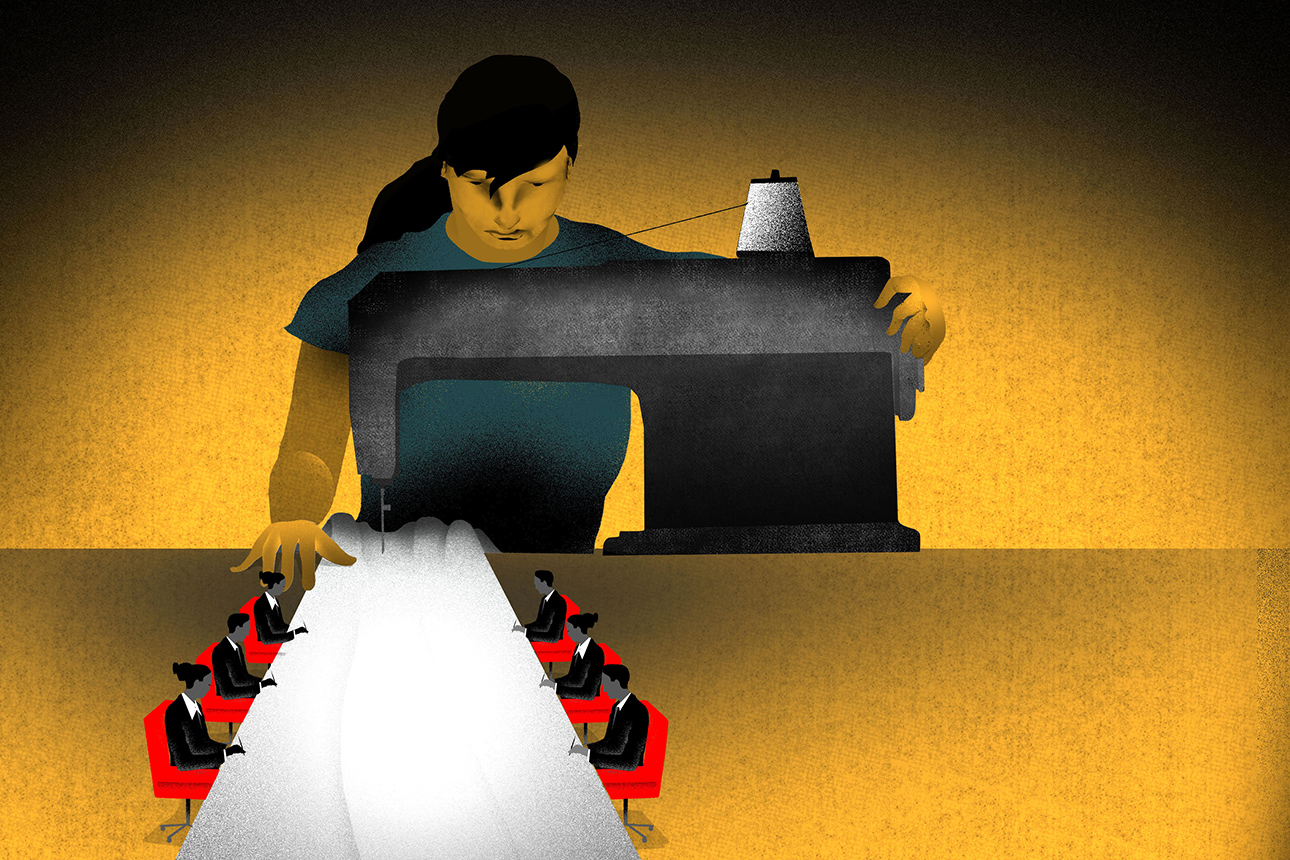Four Myths About Unauthorized Subcontracting
Organizations that want to improve supply chain visibility — and reduce diverted orders — must use analytics and think beyond price.

Image courtesy of Brian Stauffer/theispot.com
It has never been more important for a brand to know who, exactly, is making its products.
A case in point: A summer 2020 Sunday Times investigation revealed that during the COVID-19 pandemic, workers making clothes for “ultrafast” fashion brand Boohoo toiled for less than minimum wage in cramped conditions, with lax safety measures in place.1 Though Boohoo claimed that the factory was not a direct supplier, it lost more than 1.5 billion euros ($2 billion U.S.) in market value in the immediate aftermath of the Times report.2
As Boohoo discovered, suppliers can pose serious risks to a company’s reputation and finances, and the nature of the modern supply chain — global, complex, and frequently opaque — only increases the dangers. Companies that outsource manufacturing often discover that their suppliers rely in turn on layers of subcontractors, often without the buyer’s knowledge or approval. Making matters worse, these unauthorized subcontractors are more likely to operate unsafe workplaces, engage in unfair labor practices, and violate health and environmental laws.
Get Updates on Transformative Leadership
Evidence-based resources that can help you lead your team more effectively, delivered to your inbox monthly.
Please enter a valid email address
Thank you for signing up
Unauthorized subcontracting is the bane of businesses that are working to improve visibility into their supply chains. The 2013 collapse of Rana Plaza, an eight-story commercial building in Bangladesh, killed more than a thousand apparel workers and drew worldwide attention to the problem. Workshops in the building made clothing for several prominent brands, including Italian fashion company Benetton and Irish retailer Primark, but many of the companies claimed to be unaware that their orders had been farmed out. These problems aren’t limited to Bangladesh and go beyond building compliance: Companies have come under fire in many other parts of the world for using subcontractors that employed children and exploited forced labor.3
The pandemic has made the need to address supply chain visibility even more urgent by exposing the terrible working conditions in plants producing essential goods. A notorious example is the meatpacking industry.
References
1. C. Wheeler, A. Bassey, and V. Matety, “Boohoo: Fashion Giant Faces ‘Slavery’ Investigation,” The Sunday Times, July 5, 2020, www.thetimes.co.uk.
2. E. Paton, “Why You Should Care That Boohoo Is Making Headlines This Week,” The New York Times, July 8, 2020, www.nytimes.com.
3. “Child Refugees in Turkey Making Clothes for U.K. Shops,” BBC News, Oct. 24, 2016, www.bbc.com; N. McKenzie and R. Baker, “Surf Clothing Label Rip Curl Using ‘Slave Labour’ to Manufacture Clothes in North Korea,” The Sydney Morning Herald, Feb. 21, 2016, www.smh.com.au; and “Vietnam: Torture, Forced Labor in Drug Detention,” Human Rights Watch, Sept. 7, 2011, www.hrw.org.
4. “Coronavirus Flare-Ups in Germany, South Korea Show the Risks in Easing Restrictions,” Los Angeles Times, May 9, 2020, www.latimes.com.
5. Further description of the data and a thorough empirical analysis is available in F. Caro, L. Lane, and A. Sáez de Tejada Cuenca, “Can Brands Claim Ignorance? Unauthorized Subcontracting in Apparel Supply Chains,” Management Science 67, no. 4 (April 2021): 2010-2028.
6. M. Kerppola, R. Moody, L. Zheng, et al., “H&M’s Global Supply Chain Management Sustainability: Factories and Fast Fashion,” University of Michigan case no. 1-429-373 (Ann Arbor, Michigan: WDI Publishing, 2014).
7. “Responsible Leadership: Who We Are,” New Balance, accessed July 13, 2021, www.newbalance.com.
8. “Unauthorized Subcontracting: Prohibiting Unauthorized Subcontracting,” Gap Inc., accessed July 13, 2021, www.gapinc.com.
9. “Guide to Buying Responsibly,” Ethical Trading Initiative, Sept. 7, 2017, www.ethicaltrade.org.
10. “Working With Factories,” Patagonia, accessed July 13, 2021, www.patagonia.com.
11. “HP 2011 Global Citizenship Report,” PDF file (Palo Alto, California: HP Inc., 2011), 91-116, www.hp.com.
